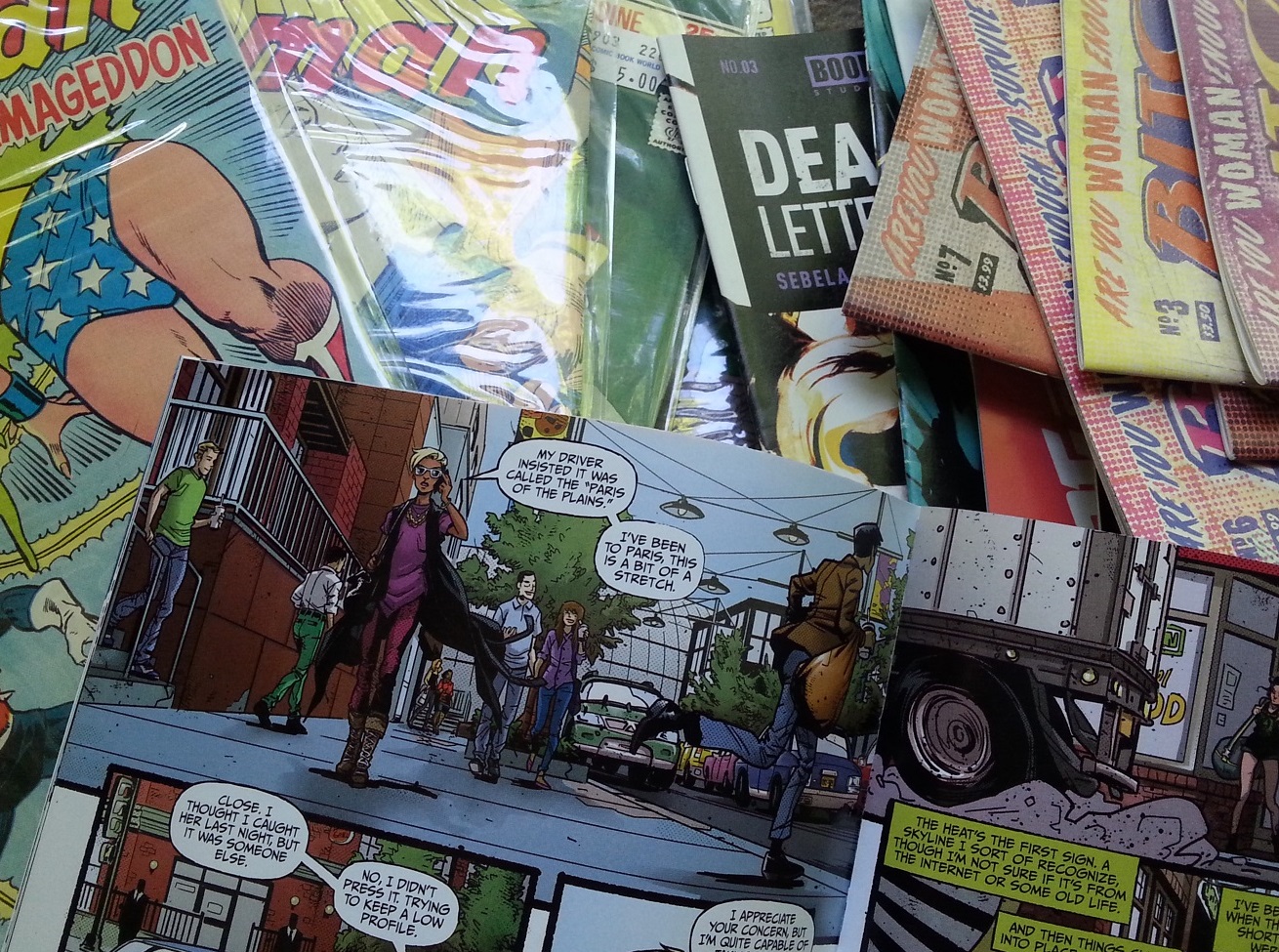
July 20th through 24th is Comic-Con International in San Diego, where thousands of comic fans convene to cosplay, confab, and collect. What does this have to do with learning a language? Reading comics and graphic novels in a foreign language is a great way to improve your comprehension. The visual cues in the art can help you decipher unfamiliar vocabulary, and whenever you’re doing something you love, you enjoy learning more and are more likely to keep up with it. So why not pick up a comic in the language you’re learning?
We asked our e-Tutors to share some of their favorite (or the most popular) comics in their native languages, and we were so pleased to find out that many of them are not just language teachers, but comic fans too.
*
Some wildly popular comics come from Japan, where the word for comic, 漫画 (manga), is understood even in English. Sakura, our Japanese tutor, suggested picking up ワンピース Wanpiisu (One Piece) or 進撃の巨人 Shingeki no Kyojin (Attack on Titan), two recently popular comics out of Japan.
*
Sev, our French e-Tutor, submitted a boatload of suggestion, and France indeed has some great bédés that are definitely worth checking out. There are the classics: Les aventures de Tintin, Asterix et Obélix, Lucky Luke; heroic fantasies: Le Monde de Troy, La quête de l’oiseau du temps; science fiction: the works of Moebius, the Nikopol trilogy by Enki Bilal; as well as other miscellaneous comics popular in France: Les Aventures extraordinaires d’Adèle Blanc-Sec, Blueberry, Yoko Tsuno, and Gaston Lagaffe.
*
Our Arabic e-Tutor Maged suggested the following great comics from Egypt:
فوت علينا بكرة fuut xaliina bukra (Pass by us tomorrow) A science fiction comic book series about the future in Egypt in the year 3014 by the outstanding comic artist Sharif Adel.
جراج garaaj (Garage) is an independent Egyptian comic magazine issued by “Planet Painters” every three months, founded by the team “Twins Cartoon”, combining the works of professional and amateur artists from all over the Arab world with the goal of creating a kind of interaction between the comic artists to increase the production of comic books and making comics a popular art.
مترو mitruu (Metro) by the comic artist Magdi Elshafei, about a young computer engineer frustrated by the future and decides to rob a bank to find himself at the center of a significant corruption conspiracy involving members of the ruling party.
*
For those learning Greek, Penelope, our Greek e-Tutor, suggested the works of Αρκάς (ar-KAS). It has many different series like the classics “Ο Κόκορας” (o KO-ko-ras= the rooster) and ” Χαμηλές Πτήσεις” (cha-mee-LES PTEE-sees= low flights), and newer series, such as “Για κανονικά μαλλιά” (ghia ka-no-ni-KA ma-leea= for regular hair), ” Τα ροζ μαύρα” (ta roz MAV-ra= the pink black) and ” Ζευγάρια με παιδιά” (zev-GHA-ria me pe-DHIA= couples with kids).
*
In Brazil, writes our Portuguese e-Tutor Dulce, one of the most popular comic books is Turma da Mônica - uma série de revistas de histórias em quadrinhos, a series of comic books or magazines created by Mauricio de Souza that featured a group of children, the most popular being Mônica and Cebolinha, and a dog called Bidu. The series was later published in 40 countries and translated into 14 languages. The story line is not very different from the American series Peanuts, by Charles Schultz.
*
Our Spanish e-Tutors, Enrique and Zaida, both suggested a Spanish classic: Mortadelo y Filemón, which was recently turned into an animated film, as well as other well-known comics Zipi y Zape, Pulgarcito, and Superlópez.
*
Our Italian e-Tutor, Michel, recommended a mix of classic and modern Italian titles: Diabolik, Dylan Dog, Lupo Alberto, and David Bowie, L’uomo delle stelle.
*
Silvia mentioned two classic comics popular in Hong Kong and Taiwan for learning Chinese: 风云 [Fēng Yún] or 火王 [Huǒ Wáng].
*
Our German e-Tutor, Anja, mentioned that some of the oldest comics in the world come from Germany, most notably “Max und Moritz” by Wilhelm Busch, which was published in 1865 (Project Gutenberg link), as well as the truly terrifying “Struwwelpeter” by Heinrich Hoffmann published in 1845, possibly the first comic ever.
*
No matter which language you’re studying, we hope we’ve given you plenty of material to get started with on your comic quest to learning a language!
Wondering what the word is for “comics” in each of the languages above? Visit our Phrase of the Day post here. If you happen to be headed to Comic-Con, visit Penguin Random House at Booth 1028!